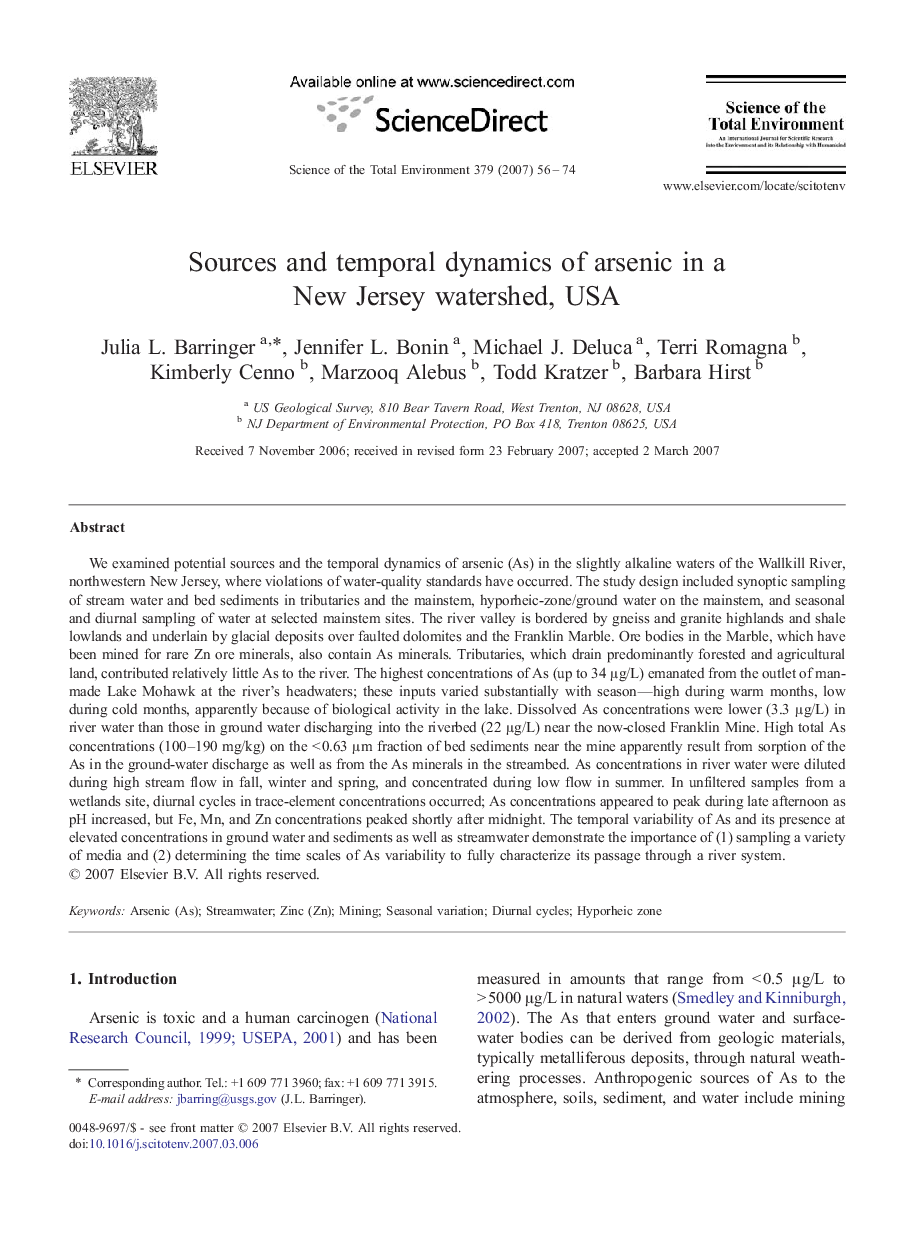| Article ID | Journal | Published Year | Pages | File Type |
|---|---|---|---|---|
| 4433300 | Science of The Total Environment | 2007 | 19 Pages |
We examined potential sources and the temporal dynamics of arsenic (As) in the slightly alkaline waters of the Wallkill River, northwestern New Jersey, where violations of water-quality standards have occurred. The study design included synoptic sampling of stream water and bed sediments in tributaries and the mainstem, hyporheic-zone/ground water on the mainstem, and seasonal and diurnal sampling of water at selected mainstem sites. The river valley is bordered by gneiss and granite highlands and shale lowlands and underlain by glacial deposits over faulted dolomites and the Franklin Marble. Ore bodies in the Marble, which have been mined for rare Zn ore minerals, also contain As minerals. Tributaries, which drain predominantly forested and agricultural land, contributed relatively little As to the river. The highest concentrations of As (up to 34 μg/L) emanated from the outlet of man-made Lake Mohawk at the river's headwaters; these inputs varied substantially with season—high during warm months, low during cold months, apparently because of biological activity in the lake. Dissolved As concentrations were lower (3.3 μg/L) in river water than those in ground water discharging into the riverbed (22 μg/L) near the now-closed Franklin Mine. High total As concentrations (100–190 mg/kg) on the < 0.63 μm fraction of bed sediments near the mine apparently result from sorption of the As in the ground-water discharge as well as from the As minerals in the streambed. As concentrations in river water were diluted during high stream flow in fall, winter and spring, and concentrated during low flow in summer. In unfiltered samples from a wetlands site, diurnal cycles in trace-element concentrations occurred; As concentrations appeared to peak during late afternoon as pH increased, but Fe, Mn, and Zn concentrations peaked shortly after midnight. The temporal variability of As and its presence at elevated concentrations in ground water and sediments as well as streamwater demonstrate the importance of (1) sampling a variety of media and (2) determining the time scales of As variability to fully characterize its passage through a river system.
